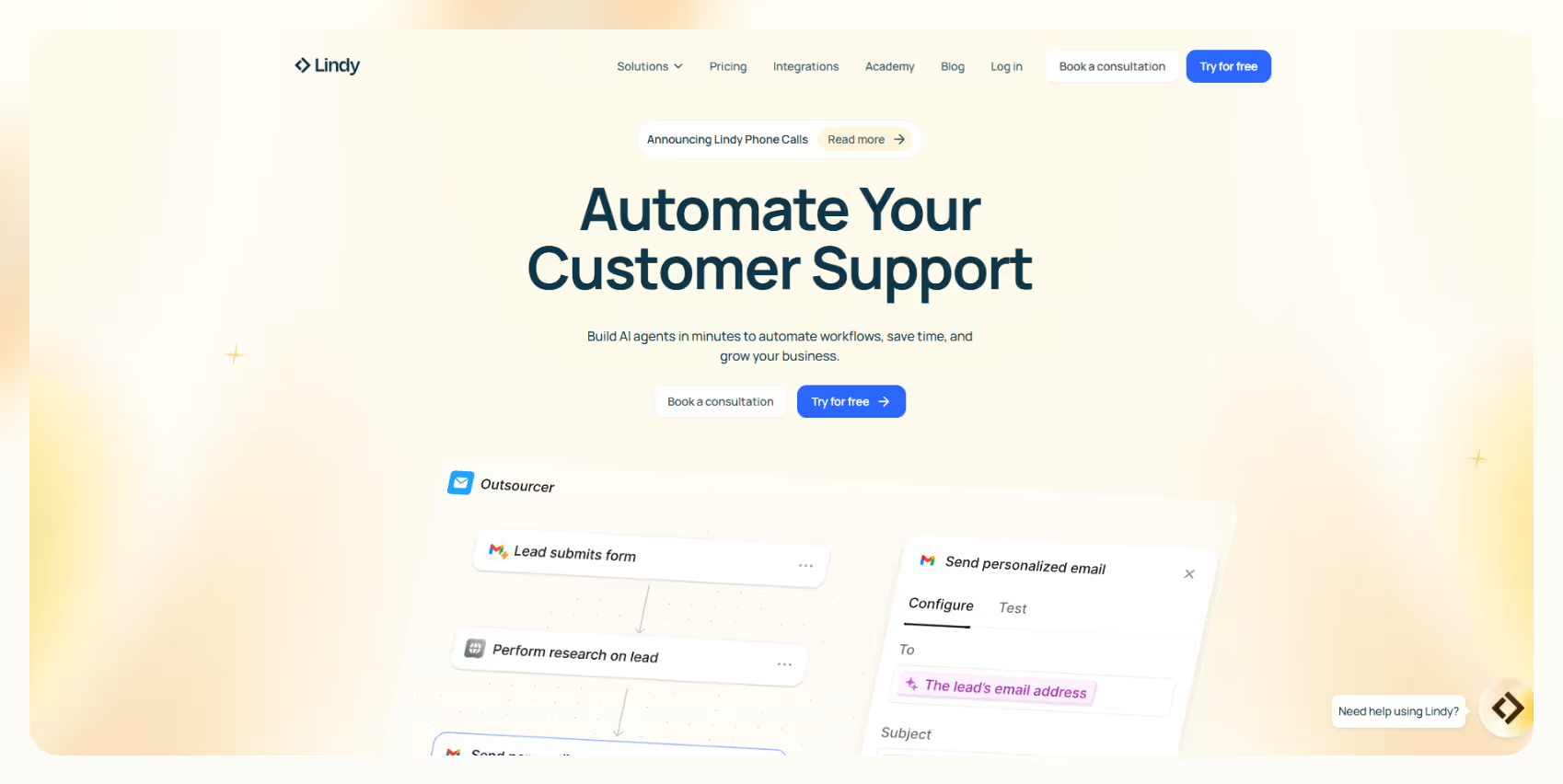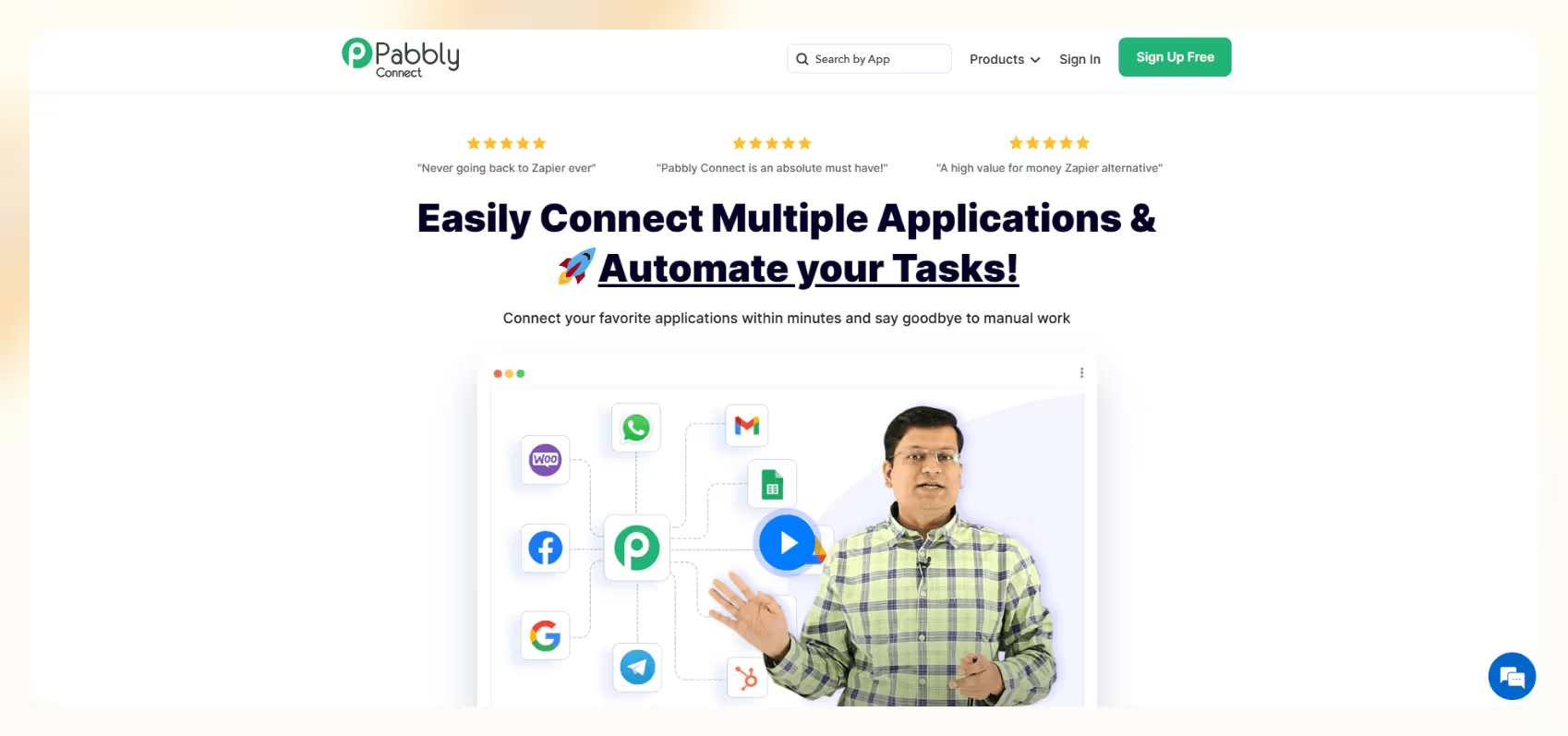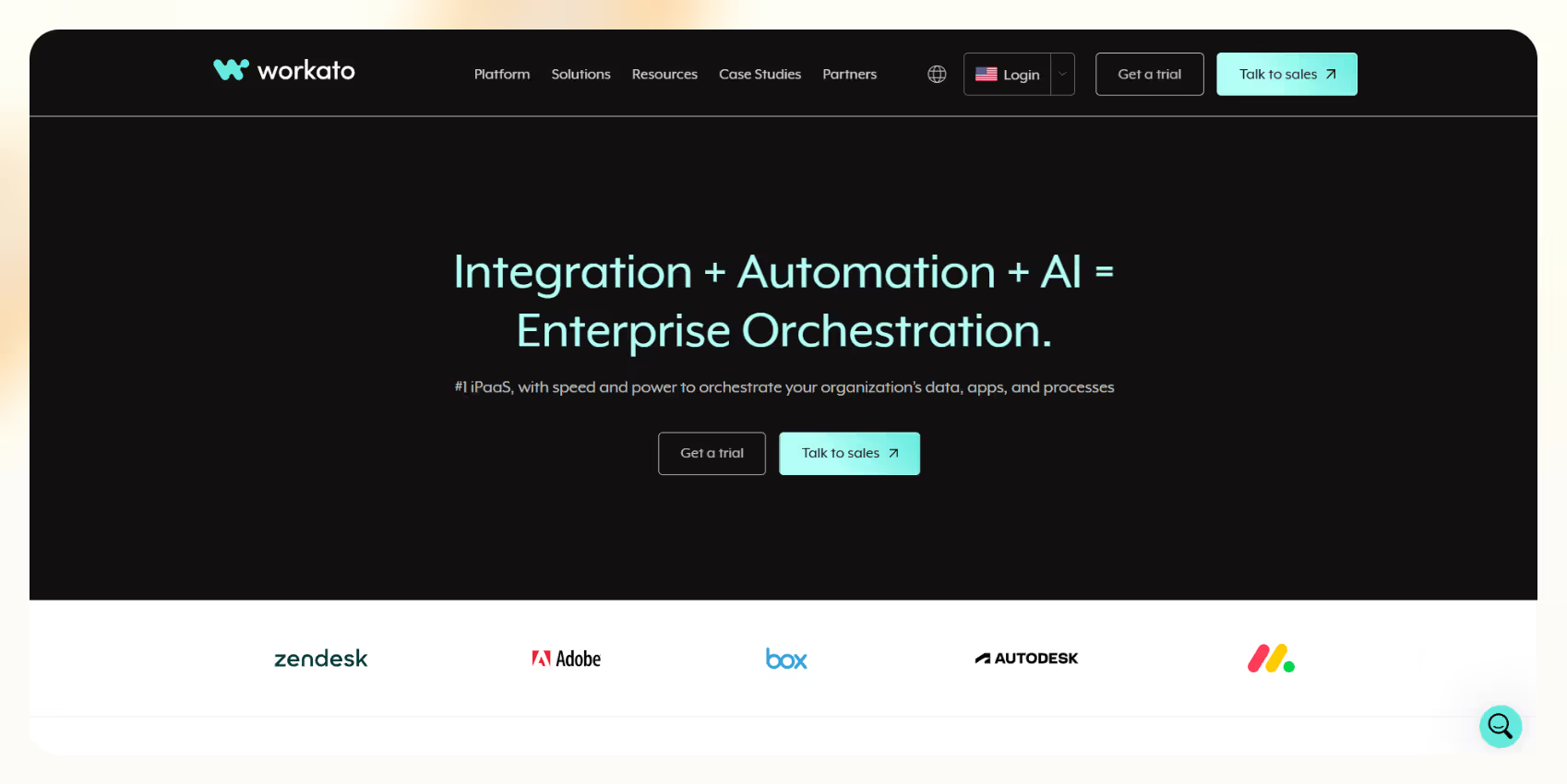Make.com is a popular no-code automation platform. It’s flexible, powerful, and offers a visual workflow builder that supports thousands of integrations.
For pricing, there’s a free plan with more tasks than many automation platforms. Then pricing runs up from $9 to $29 for most of the plans, making it on the budget-friendly side.
However, there are some hidden fees to consider, and it can do so much it can be overwhelming.
Read on to learn:
- How Make.com pricing works and whether it’s worth the cost
- What hidden fees and limitations you should watch out for
- How Make.com compares to top competitors like Lindy and Zapier
- Which is the best alternative for your needs
What is Make.com?
Make.com is a platform that lets users connect apps, automate workflows, and integrate business processes without writing code. Whether you’re linking your CRM to your email marketing tool, syncing data across spreadsheets, or setting up multi-step workflows across different services, Make handles the grunt work.
It has a visual, drag-and-drop interface where users build automation “scenarios” by linking actions between over 2,000 apps. Instead of manually moving data between tools, Make runs workflows on a schedule — or in real time — so teams can focus on more important aspects of their business.
Unlike simpler automation tools that just connect one app to another, Make allows for complex, multi-step workflows with filters, conditions, and even built-in data processing.
That means users can create workflows that don’t just pass data along but actually change and route information based on set rules. It supports API integrations, webhooks, and even scripting for more advanced use cases, making it flexible enough for businesses of all sizes.
And if Make isn't quite the right fit, alternatives like Lindy, Zapier, Pabbly Connect, and Workato offer their own takes on automation. But more on that later.
Who typically uses Make?
The short answer? Anyone who’s tired of wasting time on repetitive tasks. The long answer? We need to break down each persona in a bit more detail:
- Business owners and entrepreneurs: Running a business can sometimes mean having to use a dozen tools at once. Make helps by automating customer onboarding, managing invoices, and keeping different software in sync. Instead of manually sending follow-up emails or updating databases, business owners can let Make handle it.
- Marketers: Whether it’s automating lead management, tracking campaign performance, or syncing contacts between platforms, Make helps marketers keep everything connected. Need to send new leads from a form to a CRM while also triggering a Slack notification and adding a row in Google Sheets? Make can handle all that — without needing IT.
- Operations and IT teams: Keeping internal processes running smoothly often means moving data between apps, syncing databases, and managing integrations. Make is useful for handling internal workflows, automating approvals, and confirming different systems talk to each other. Custom development isn’t needed.
- Developers and tech-savvy users: While Make is no-code, it’s not just for non-technical users. Developers can integrate APIs, process webhooks, and automate backend operations without building full-fledged applications from scratch. It’s also a great option for prototyping workflows before committing to more permanent solutions.
- E-commerce and customer support teams: Online stores and support teams rely on fast response times and smooth order management. Make can automate order processing, customer updates, and help desk ticketing, reducing the amount of manual work involved.
Make.com pricing plans: What you need to know
Make.com pricing is based on how many operations (automated actions) you need each month. Every plan includes access to their apps and various levels of support as well as scenarios (automated workflow or process that you build using Make).
Here’s a quick breakdown of their plans, costs, and who they’re best for:
Note: For a more detailed look at Make.com pricing make sure to check their official pricing page.
Does make offer refunds or trials?
Not exactly. Make does not offer refunds by default, but they handle them on a case-by-case basis. If you accidentally buy the wrong plan or cancel shortly after subscribing, support might grant a prorated refund — but don’t count on it.
As for trials, there isn’t a separate free trial for paid plans because the Free plan acts as a permanent trial. It gives full access to the visual builder, 2,000+ app integrations, and unlimited users, so anyone can test the platform before committing to a paid plan.
Are there any hidden fees with Make.com pricing?
Make is pretty upfront about pricing, but there are a couple of costs you should be aware of:
- Operations overages: If you hit your monthly limit, Make will automatically buy extra operation blocks (10,000 ops per block) with a 30% markup unless you turn off auto-purchase. That means if your workflows suddenly spike in usage, you might see a bigger bill than expected.
- Enterprise-only features: Features like SSO (Single Sign-On), audit logs, and certain premium connectors aren’t available on lower-tier plans. If you need these, you’ll have to upgrade to Enterprise, which doesn’t have public pricing.
- File size and data transfer limits: Lower-tier plans cap file uploads at 5MB and limit total data transfer (e.g., Free plan allows 512MB per month). If you process large files, you’ll need a higher plan to avoid hitting these limits.
Takeaway: Overall, Make pricing is fairly transparent, but if your workflows are unpredictable, be mindful of automatic overages.
What are some limitations of Make.com?
Make.com has plenty of strengths, but like any tool, it comes with trade-offs. Here are some potential downsides to consider before diving in:
Complex workflows can eat up operations quickly
As stated before, Make.com pricing is based on operations, and while that works well for simple automations, more complex workflows can burn through your monthly limit faster than expected.
A scenario that loops through a list, processes large datasets, or syncs detailed CRM records can use hundreds or even thousands of operations in a single run. Workflows that rely on frequent updates, like real-time data syncing between apps, can also add up fast.
No instant triggers for some apps
Make supports thousands of apps, but not all integrations offer instant triggers. Some workflows run on a scheduled basis, meaning an automation might check for new data every five or fifteen minutes instead of running the moment something happens.
For businesses that depend on real-time automation, such as lead capture workflows or inventory updates, this delay can be frustrating. Make does have webhooks, which allow for real-time automation, but setting them up requires some technical know-how.
Debugging can be a headache
Building a workflow is one thing — figuring out why it didn’t work is another. While Make provides execution logs, lower-tier plans don’t include full-text log search, which makes troubleshooting harder. If an automation has multiple conditions, routers, or custom API calls, finding the exact step that failed can take time.
For users switching from simpler automation tools, the error messages and debugging tools might feel more complicated than expected.
Not every app has a native integration
Make integrates with lots of apps but that doesn’t mean every tool works out of the box. If a service isn’t supported, users have to rely on HTTP requests, webhooks, or third-party services like Albato to fill the gap.
This isn’t necessarily a dealbreaker, but it does add an extra step — especially for users without experience working with APIs. Some competitors (some of which we’ll cover in our next section) offer larger integration libraries, making them more convenient for users who want quick, pre-built connections without extra setup.
Make.com vs competitors: Pricing and features compared
When choosing an automation platform, pricing and features matter. However, to truly know if you’re making the right call, you’ll have to dig deeper. We’ll save you the hassle with a chart comparing Make.com pricing and features against competitors:
The 4 Best Alternatives to Make.com
1. Lindy — Best automation alternative for AI workflows

Lindy is a no-code automation platform that uses AI agents called “Lindies” to manage complex workflows similar to Make. However, its more focused on creating AI workflows so it’s more intuitive than Make in how to add them to the visual editor. Make almost has too many options, which can steepen the learning curve.
Why choose it?
- AI agents easy to add: Lindy makes adding AI agents a bit more user-friendly, even though the workflows can be custom and complex. Instead of manually adding and configuring AI modules, users can add an AI agent, assign it actions, and it autonomously manages the process.
- Access to more LLM Models at any tier: Lindy’s quicker to add access to newer powerful AI models, whereas Make requires you to be on a higher pricing tier to use models like o1.
- Can handle conversations and human-like tasks: Use AI models for all sorts of tasks that require more detailed decision-making such as email responses, scheduling, customer inquiries, and even making phone calls at scale.
- Scalable credit-based system: Pricing can be adjusted with usage, and businesses can set their monthly credit limits via the pricing slider without switching plans.
Best for
Companies looking for more automation focused on AI, not just app connectors. Ideal for tasks that require contextual decision-making, like email negotiations, outbound lead calling, and support ticket dispatching.
2. Zapier — Best for pre-built workflows and simplicity

Zapier is the easiest-to-use automation platform. It’s designed for plug-and-play automation, making it a great choice for users who need quick workflows without a steep learning curve.
Why choose it?
- Largest integration library: Supports 5,000+ apps, often with instant triggers, while Make.com sometimes has delays or requires polling.
- Easiest setup for non-technical users: Unlike Make.com, which requires understanding routers, iterators, and logic, Zapier’s workflows are linear and straightforward.
- More pre-built Zaps than any competitor: Users can instantly deploy thousands of templates instead of manually configuring each workflow.
- Best for simple workflows: If you just need to move data between apps (e.g., "When a new Stripe payment is received, create a Google Sheets row"), Zapier is faster and easier than Make.
Best for
People and teams who want automation up and running fast without technical complexity. Great for marketing teams, small business owners, and non-technical users who need basic integrations with minimal effort.
3. Pabbly Connect – Best budget-friendly alternative

Pabbly Connect is a low-cost alternative to Make.com and Zapier, offering lifetime deals and unlimited operations without per-task charges. Pabbly offers fixed-pricing tiers, making it a better choice for budget-conscious users who don’t want their costs to scale unpredictably.
Why choose it?
- No per-task charges: Unlike Make, which charges per operation, Pabbly offers fixed quotas, making costs predictable.
- Supports multi-step workflows for less money: Zapier locks multi-step automations behind higher-priced plans, but Pabbly includes them even on lower-tier plans.
- Good for recurring billing and form automation: Unlike Zapier or Make, Pabbly includes built-in form builders and recurring billing tools, making it useful for subscription businesses.
- Lifetime pricing option: One-time payment plans mean you can buy it once and use it forever, avoiding monthly fees.
Best for
Freelancers, small businesses, and startups who want automation without high monthly costs.
4. Workato – Best for enterprise-grade security

Workato is a high-end automation platform focused on large enterprises that need secure, scalable, and complex automation workflows. It is designed for IT-driven automation and enterprise compliance needs.
Why choose it?
- Best security and compliance: Includes SOC 2, HIPAA, on-prem options, and enterprise-grade access control, making it ideal for regulated industries.
- Built for large-scale automation: Unlike Make.com, which charges per operation, Workato is designed for large data processing at scale without worrying about hitting limits.
- Transaction-based pricing: Pricing is not based on tasks but on business transactions, making it more scalable for high-volume operations.
Best for
Large companies and IT teams that need secure, scalable, and high-performance automation. Ideal for finance, healthcare, enterprise IT, and teams managing massive data workflows.
Make vs. Lindy: Which should you choose?
Choosing between Make.com and Lindy depends on your specific needs and how you prefer to automate tasks. Here's a breakdown to help you decide:
Choose Make.com if:
- You prefer a visual approach to automation: Make.com offers a drag-and-drop interface, allowing you to build workflows without coding. It's ideal if you like to see the flow of your processes laid out visually.
- You need a free plan with basic features: If you're just starting with automation, Make.com's free plan provides 1,000 operations per month, which is suitable for light usage.
- You're comfortable with a bit of a learning curve: To fully utilize Make.com's capabilities, understanding concepts like routers and iterators is beneficial. If you're up for learning these, Make.com offers strong tools for complex workflows.
Choose Lindy if:
- You want AI workflows: Lindy allows you to create Lindies with AI agents easily, and use them to set up complex workflows in its visual editor. With AI, you can manage tasks across various applications, making decisions and executing actions without lots of constant oversight.
- You're looking for flexible pricing based on usage: Apart from its tiered plans, Lindy operates on a credit system, allowing you to scale your usage according to your needs. This can be more cost-effective if your automation requirements vary from month to month.
Final verdict: Is Make worth it compared to Lindy?
Both Make and Lindy offer automation, but they serve different needs.
Make.com provides a visual, flow-based system where users can manually configure workflows, including AI-powered modules like ChatGPT and Claude. It’s a good choice for those who prefer structured automation and don’t mind setting up workflows step by step.
Lindy simplifies automation by letting users build entire workflows through AI agents (Lindies). Instead of manually defining steps, users provide instructions in plain English, and Lindies handle the rest — from responding to customer inquiries to managing internal operations.
Ready to start using Lindies to automate your key business processes? Try Lindy for free today.













.jpg)
.png)
.png)


.png)
.png)